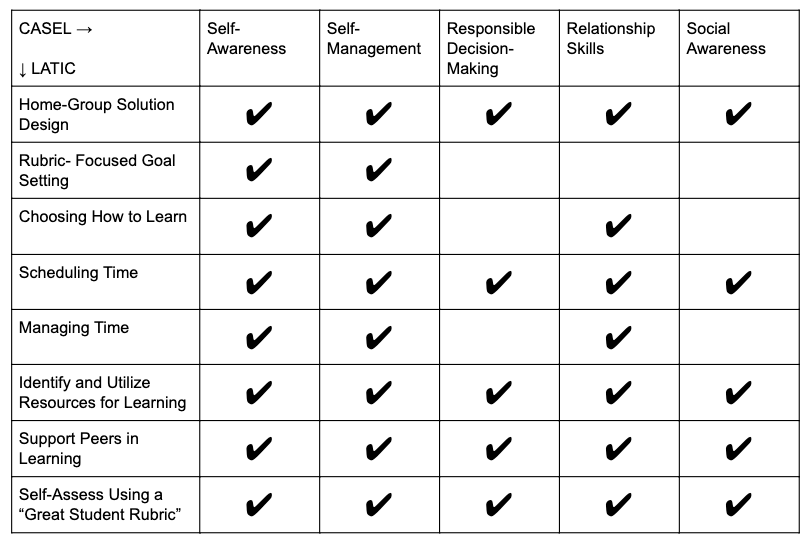The Learner-Active, Technology-Infused Classroom (LATIC) is a social learning environment that builds student responsibility for learning. It is a veritable playground for promoting social and emotional learning (SEL).
What does a typical moment look like in such a student-driven learning environment? Students:
- Are excited to tackle developing a solution to a real-world problem as part of a collaborative team (“home group”).
- Review rubrics to determine what they already know and what they need to learn, and then set learning goals.
- Reference activity lists with differentiated learning opportunities and choose how they will learn.
- Create schedules for their day or week as to how they will use their time: individually, with a partner, and with a group.
- Keep track of time and move from one activity to another based on the schedules they created.
- Utilize the teacher, peers, and outside experts as resources in the learning process.
- Offer guidance and support to their colleagues in their mutual quest for learning.
- Self-assess using a “Great Student Rubric” for how to engage in a social, collaborative learning environment.
Now take a moment to map those to the five key competencies of social and emotional learning (SEL) as defined by casel.org:

When teachers increase student responsibility for learning; student engagement in collaborative, real-world problem solving; and student voice and choice in the classroom, they design learning environments that require students to increase their skills in self-awareness, self-management, responsible decision-making, working relationships, and social awareness. In building these critical skills, they are preparing students for life in and out of school across their lives.
